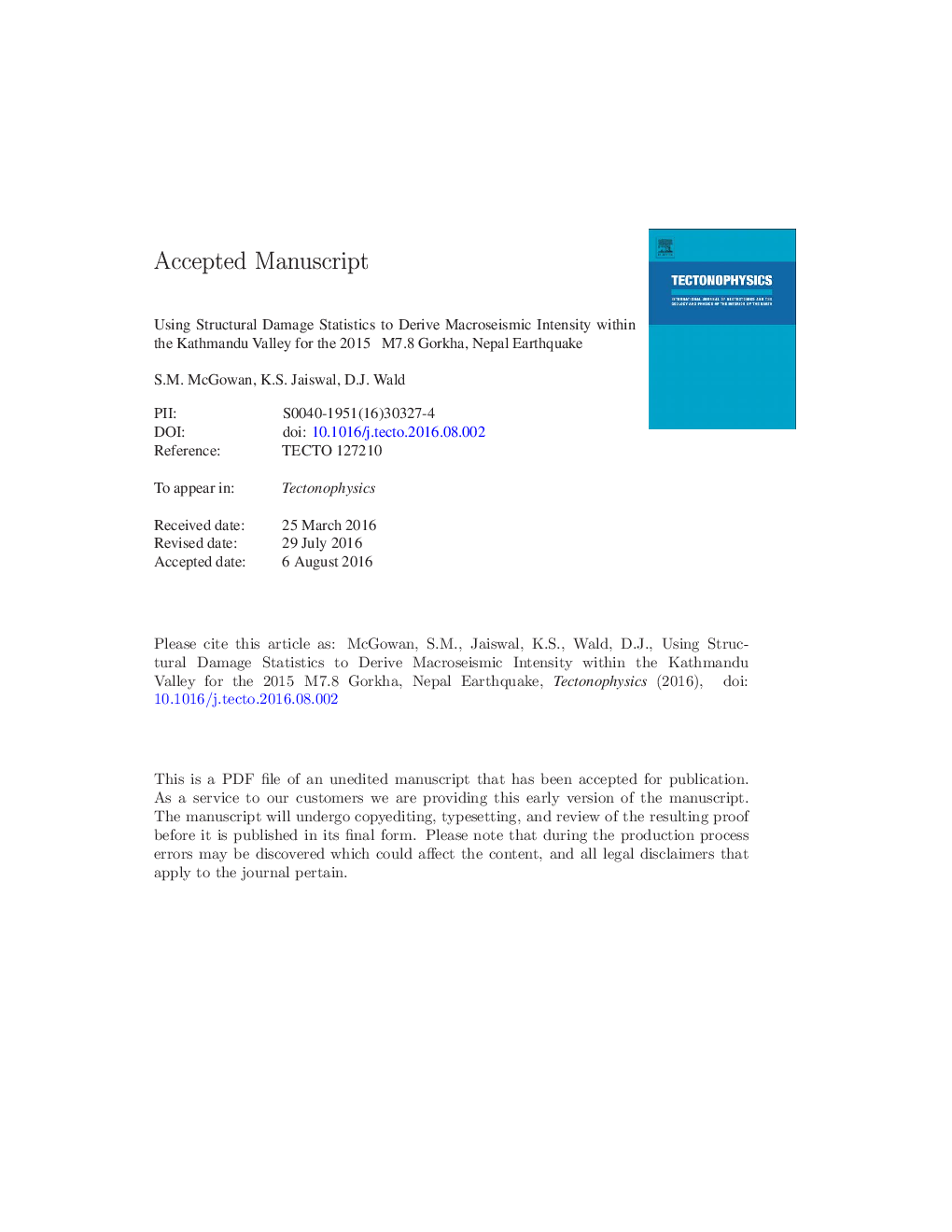| کد مقاله | کد نشریه | سال انتشار | مقاله انگلیسی | نسخه تمام متن |
|---|---|---|---|---|
| 5781618 | 1636693 | 2017 | 30 صفحه PDF | دانلود رایگان |
عنوان انگلیسی مقاله ISI
Using structural damage statistics to derive macroseismic intensity within the Kathmandu valley for the 2015 M7.8 Gorkha, Nepal earthquake
دانلود مقاله + سفارش ترجمه
دانلود مقاله ISI انگلیسی
رایگان برای ایرانیان
موضوعات مرتبط
مهندسی و علوم پایه
علوم زمین و سیارات
فرآیندهای سطح زمین
پیش نمایش صفحه اول مقاله

چکیده انگلیسی
We make and analyze structural damage observations from within the Kathmandu valley following the 2015 M7.8 Gorkha, Nepal earthquake to derive macroseismic intensities at several locations including some located near ground motion recording sites. The macroseismic intensity estimates supplement the limited strong ground motion data in order to characterize the damage statistics. This augmentation allows for direct comparisons between ground motion amplitudes and structural damage characteristics and ultimately produces a more constrained ground shaking hazard map for the Gorkha earthquake. For systematic assessments, we focused on damage to three specific building categories: (a) low/mid-rise reinforced concrete frames with infill brick walls, (b) unreinforced brick masonry bearing walls with reinforced concrete slabs, and (c) unreinforced brick masonry bearing walls with partial timber framing. Evaluating dozens of photos of each construction type, assigning each building in the study sample to a European Macroseismic Scale (EMS)-98 Vulnerability Class based upon its structural characteristics, and then individually assigning an EMS-98 Damage Grade to each building allows a statistically derived estimate of macroseismic intensity for each of nine study areas in and around the Kathmandu valley. This analysis concludes that EMS-98 macroseismic intensities for the study areas from the Gorkha mainshock typically were in the VII-IX range. The intensity assignment process described is more rigorous than the informal approach of assigning intensities based upon anecdotal media or first-person accounts of felt-reports, shaking, and their interpretation of damage. Detailed EMS-98 macroseismic assessments in urban areas are critical for quantifying relations between shaking and damage as well as for calibrating loss estimates. We show that the macroseismic assignments made herein result in fatality estimates consistent with the overall and district-wide reported values.
ناشر
Database: Elsevier - ScienceDirect (ساینس دایرکت)
Journal: Tectonophysics - Volumes 714â715, 13 September 2017, Pages 158-172
Journal: Tectonophysics - Volumes 714â715, 13 September 2017, Pages 158-172
نویسندگان
S.M. McGowan, K.S. Jaiswal, D.J. Wald,